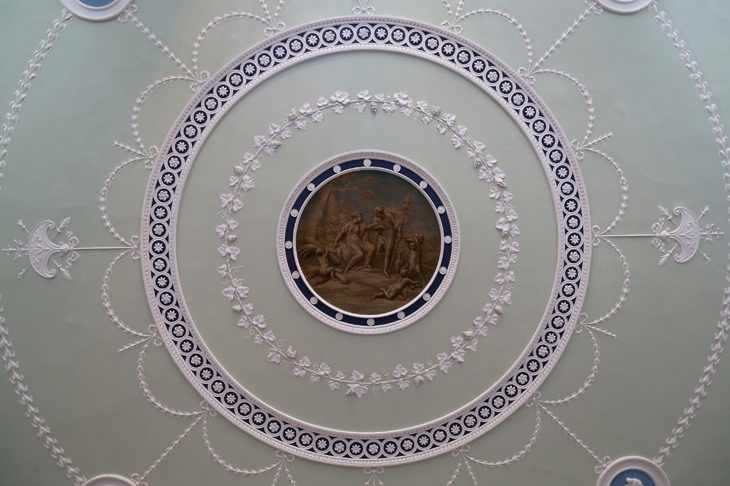Of the 375,000 listed buildings in England only 2.5 per cent are Grade I. Half are churches; many are otherwise uninhabitable, such as Nelson’s Column or the Royal Opera House. There are perhaps only 2,500 Grade I listed buildings in England in which you can feasibly live: these include Buckingham Palace and the Sutherland gaff.
Eighteen years ago, when we had twins and decided to move out of London, my wife discovered a four-bedroom apartment in the roof of a Robert Adam house a mile outside the M25. To our astonishment, it was barely more expensive than ordinary housing of similar size nearby. I recently asked my neighbour, an economist, what premium we pay for the house’s architectural quality. ‘Between 0 and 5 per cent,’ he estimated.
What’s going on? Whereas a Picasso costs perhaps 100,000 times more than a same-size picture bought on the Bayswater Road, an Adam flat costs scarcely more than a boring, similar-sized flat nearby. It’s not a great advertisement for training as an architect, is it, when you can reach the towering heights of your profession yet fail to add 3 per cent to the value of what you build?
It wasn’t entirely by chance that we found our apartment. In rivalrous markets such as property it pays to cultivate eccentric tastes. So, as canny amateur decision-scientists, we had deliberately set out to invert the house-hunter’s decision tree by reversing the usual order of elimination. We put architecture at the top and left geography until last: Kent-Essex-Surrey-ish was as specific as we got.
When most people buy a house, the internet search order goes 1) narrowly define location 2) set the price band 3) choose between flat or attached/detached house 4) define number of bedrooms 5) bring in other parameters, such as garden. Architectural quality is decisive only at the end stages, when people have already filtered their choice down to 20 houses that match their previous criteria. Since it is difficult to quantify (there is no Robert Parker for architecture) it gets relegated to an afterthought.
Imagine what the art market would look like if it worked like Zoopla or Rightmove. ‘I want a painting that’s such and such a size, painted in southern France; I want it to feature some trees and maybe a cow; I’d like it to be twice as wide as it’s tall, with blues and greens predominating.’ Only in the fifth iteration or so would we decide between artists. Under these conditions, a Matisse or a Turner would be cheap.
Tip: if you want a cheap way to buy art, buy architecture.
It was widely believed that the internet would improve the workings of markets by making it easier for people to choose more knowledgeably from a wide range of options. I’m not now so optimistic. On the upside, I believe online comparison will improve the quality of hotels immeasurably, since it is possible to choose hotels using a range of parameters, including guest ratings.
But it may make airlines worse, since all travel websites more or less force you to act like a bargain hunter: an airline which sensibly decided to add £20 to the price of every ticket to increase legroom would more or less vanish from sight in online price comparison rankings. Will air travel become nastier and nastier not because most air travellers are cheapskates, but because websites encourage everyone to act like they are?
A degree of randomness, serendipity and fuzzy logic needs to be added to search engines of this kind. Because if you force everyone to choose the same way, everyone ends up chasing the same thing.







Comments